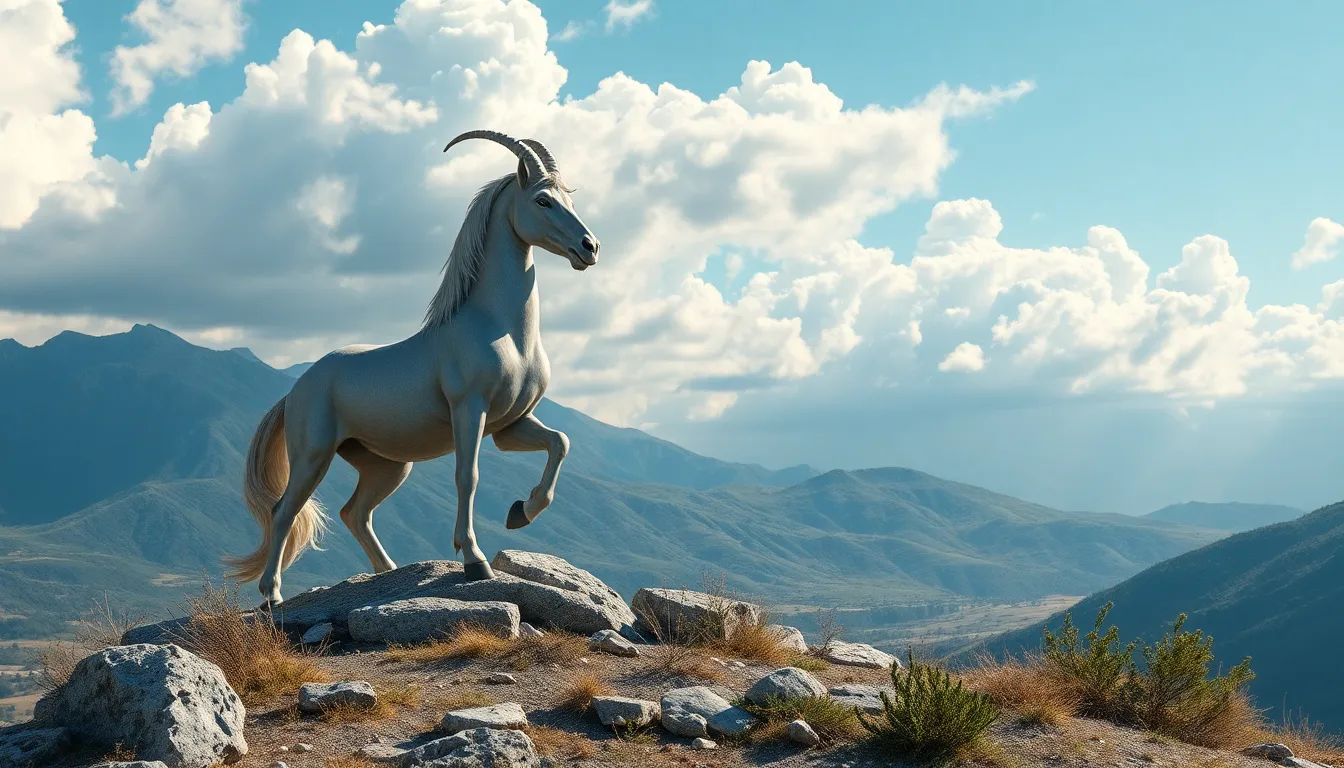The Centaur’s Place in the Mythical Landscape of Greece
I. Introduction
Greek mythology is a vast and intricate tapestry that has fascinated scholars, artists, and enthusiasts for centuries. It serves as a window into the beliefs, values, and practices of ancient Greek society, providing insights into their understanding of the world. Among the myriad of creatures that populate this rich mythological landscape, centaurs stand out as compelling symbols of duality and complexity.
Centaurs, hybrid beings that possess the upper body of a human and the lower body of a horse, embody a unique blend of civilization and barbarism. Their dual nature has made them intriguing figures in myths, reflecting the struggles between human instincts and societal norms. This article aims to explore the role and symbolism of centaurs in Greek mythology, highlighting their origins, notable myths, and lasting influence on both ancient and contemporary culture.
II. Origins of Centaurs in Greek Mythology
The etymology of the term “centaur” is rooted in ancient Greek, derived from the word “kentauros.” Early references to centaurs can be found in Hesiod’s “Theogony,” where they are described as wild and untamed beings. Theories regarding their origins suggest that centaurs may have been influenced by the interactions between the Greeks and the nomadic tribes of Central Asia, leading to a cultural amalgamation that birthed these mythical creatures.
Key myths involving the birth of centaurs often revolve around the union of Ixion, a king of the Lapiths, and a cloud created by Zeus to resemble Hera. This union produced the centaurs, who were subsequently viewed as both noble and savage. The centaur mythos reflects the complexities of human nature, illustrating the struggle between the civilized self and the primal instincts that reside within.
III. Centaurs as Symbols of Duality
Centaurs epitomize the duality of existence, representing the tension between civilization and barbarism. They are often depicted as embodying the best and worst of human nature:
- Civilization vs. Barbarism: Centaurs are frequently portrayed as wild and unruly, yet some, like Chiron, exemplify wisdom and healing.
- Human Instincts vs. Animalistic Behavior: Their hybrid form symbolizes the constant battle between rational thought and primal urges.
- Reason vs. Chaos: In various myths, the centaur’s internal conflict mirrors the broader human condition, highlighting the need for balance.
This duality serves as a powerful narrative device in Greek mythology, encouraging reflection on the complexities of human experience.
IV. Notable Centaurs in Greek Myths
Several centaurs have emerged as prominent figures in Greek mythology, each with distinct characteristics and stories:
- Chiron: Known as the wise centaur, Chiron is celebrated for his knowledge of medicine and his role as a mentor to many heroes, including Achilles and Asclepius. Unlike other centaurs, Chiron embodies a harmonious balance between man and beast.
- Pholus: The hospitable centaur, Pholus, is best known for his tragic tale involving the accidental death of Heracles. His story reflects the themes of hospitality and the consequences of uncontrollable circumstances.
- The Centaur Battle: At the wedding of Pirithous and Hippodamia, centaurs attempted to abduct the bride and other guests, leading to a fierce battle. This myth illustrates the chaotic nature of centaurs and their struggle against civilized norms.
V. The Role of Centaurs in Greek Society
Centaurs serve as reflections of ancient Greek values and societal norms. They embody the tension between the civilized world and the untamed wilderness, representing the fears and aspirations of the Greeks:
- Untamed Wilderness: Centaurs symbolize the wild, untamed aspects of nature, highlighting the Greeks’ respect and fear of the natural world.
- Cautionary Figures: In literature, centaurs often serve as cautionary figures, warning against the dangers of letting one’s instincts overpower reason.
Their presence in mythology reflects the complexities of human nature and the constant struggle for balance between civilization and the wild.
VI. Centaurs in Art and Literature
Throughout history, centaurs have been depicted in various forms of art and literature:
- Ancient Greek Pottery and Sculptures: Centaurs are commonly found in ancient pottery, often depicted in battle scenes or as part of mythological narratives, showcasing their dual nature and complex symbolism.
- Classical Literature: Authors such as Homer and Hesiod explore centaur mythology, weaving their stories into larger narratives about heroism, morality, and the human condition.
- Modern Interpretations: Contemporary adaptations of centaur mythology can be seen in films, literature, and visual arts, often reimagining these creatures in new contexts.
VII. The Legacy of Centaurs in Contemporary Culture
The influence of centaur mythology extends into modern culture, where they continue to capture the imagination:
- Modern Fantasy Literature and Film: Centaurs have found a place in contemporary fantasy, often depicted as noble beings or fierce warriors, as seen in works like J.K. Rowling’s “Harry Potter.”
- Metaphors in Contemporary Discussions: Centaurs are frequently used as metaphors for the duality of human nature in discussions about psychology, philosophy, and society.
- Popular Culture: From role-playing games like Dungeons & Dragons to visual arts and animation, centaurs continue to be a popular motif, reflecting their enduring legacy.
VIII. Conclusion
The centaur holds a significant place in Greek mythology, serving as a powerful symbol of duality and the human experience. Through their complex narratives, centaurs reflect the struggles between civilization and barbarism, reason and chaos. Their legacy endures in both ancient and modern contexts, reminding us of the intricate relationship between humanity and nature.
As we explore the stories and symbolism of centaurs, we gain valuable insights into ancient Greek values and the timeless complexities of the human condition. The centaur remains a relevant figure, embodying the ongoing struggle to balance our primal instincts with the demands of civilization.




